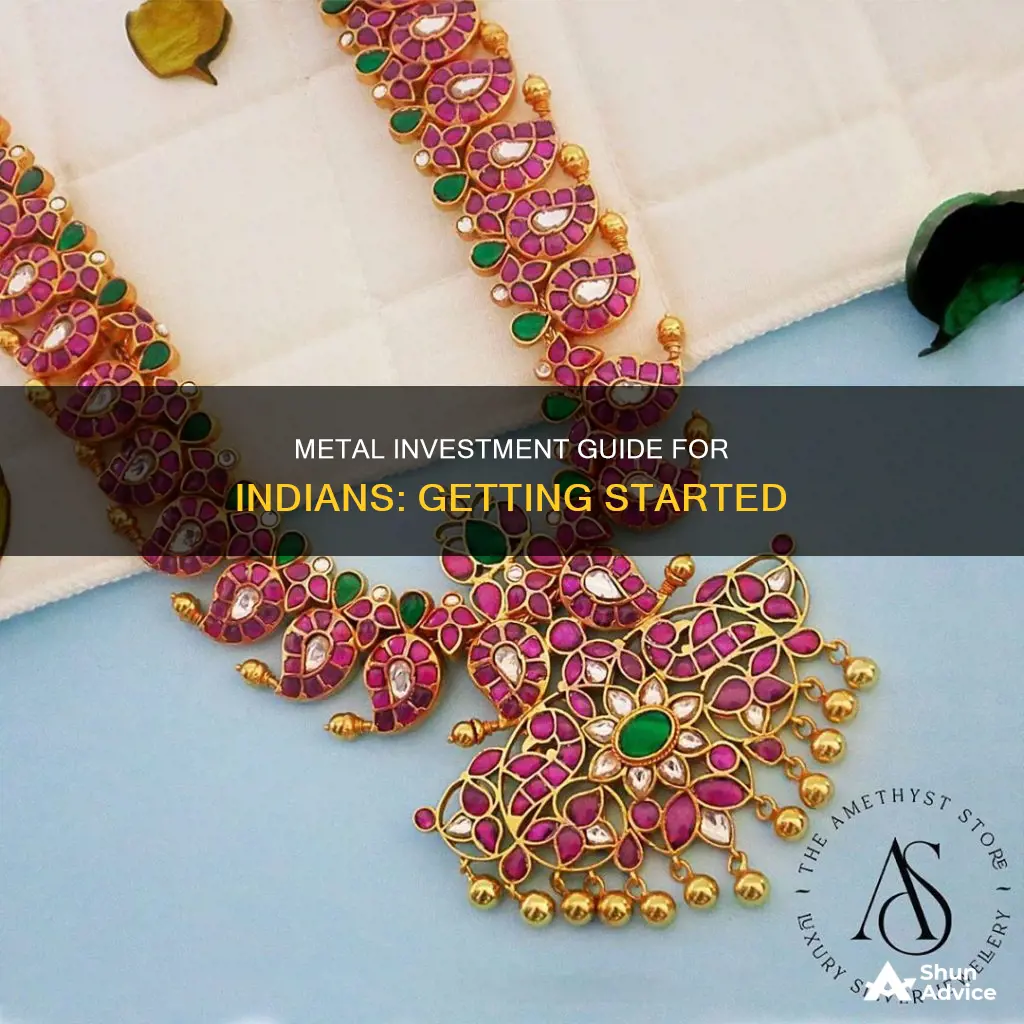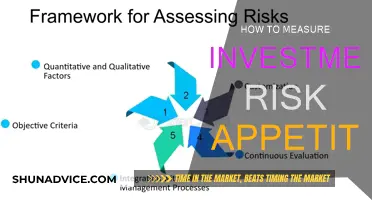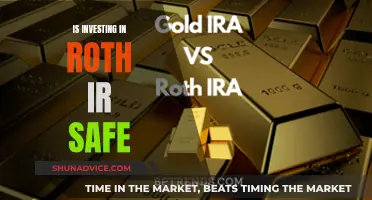
India's metal industry is crucial to the economy, offering significant investment opportunities. The country's large reserves of minerals, including iron ore, bauxite, chromium, manganese ore, and rare earth metals, have established it as a significant global player in terms of production. With advantageous geographical proximity to rapidly growing Asian markets, India exported metals worth USD 20.89 billion in 2023, with projections reaching USD 28.46 billion by 2028.
The metal industry's role in manufacturing and construction is vital, contributing to the country's GDP, job creation, and foreign exchange reserves. India's National Mineral Policy 2019 and the Mines and Minerals (Development and Regulation) Amendment Act 2021 further support the sector, which is expected to witness major reforms driven by initiatives like Smart Cities, Make in India, Rural Electrification, and the National Electricity Policy for renewable energy projects.
As the industry continues to grow, investors can explore various options to capitalise on this sector, including investing in metal stocks, exchange-traded funds (ETFs), and sovereign gold bonds.
| Characteristics | Values |
|---|---|
| Types of metals | Precious metals (gold, silver, platinum, palladium, rhodium, iridium, ruthenium, osmium, rhenium, indium) and base metals (copper, lead, nickel, zinc) |
| Precious metals | Rare, organically occurring metallic elementals with inherent value; do not usually oxidise or corrode and are naturally anti-tarnish |
| Base metals | Common metals that naturally oxidise, rust or tarnish |
| Precious metals uses | Jewellery, currency, devices (e.g. iPhones, computer hardware), medicine, alloys, electronics, automotive parts, medical devices |
| Base metals uses | Copper pipes, alloys (e.g. nichrome, an alloy of nickel and chromium), sculpture (e.g. the Statue of Liberty) |
| Investment options | Buying physical metals (jewellery, coins, biscuits), exchange-traded funds (ETFs), sovereign gold bonds (SGBs), mutual funds, mining company stocks |
| Diversification | Precious metals can offer diversification benefits to an investment portfolio |
| Inflation hedge | Precious metals are often seen as a hedge against inflation |
| Disadvantages | Regulatory risks, price volatility |
| Gold demand in India | Seasonal |
| Silver value | Extensively used in industries |
| Platinum | Extremely rare |
| Palladium | Used in a wide range of industries and the jewellery sector; valued for its durability |

Gold ETFs and Funds
To invest in Gold ETFs, you will need a Demat account. You can choose from several funds based on your preferred parameters, such as CAGR 5Y, 1-year returns, or market cap. Once you've decided on a Gold ETF, you can visit the individual asset page and buy it online with ease.
Gold ETFs are a simple and hassle-free way to invest in gold without worrying about storage, security, or making charges associated with physical gold. They provide a convenient and secure avenue for investors, especially Non-Resident Indians (NRIs), to benefit from the stability and growth potential of gold as a precious metal.
It is important to note that NRIs are not allowed to invest in Sovereign Gold Bonds (SGBs), which are digital investments in gold issued by the Central Government through the RBI. However, if an NRI had invested in SGBs while they were a resident of India, they can continue to hold them until maturity.
Passive Investment Management: Strategy, Benefits, and Drawbacks
You may want to see also

Commodity exchanges
When investing in precious metals through commodity exchanges, it is essential to consider the various factors that can influence their prices. For example, shortages or increased demand for precious metals can drive up their value. Additionally, during economic uncertainty, precious metals are often viewed as safe havens, leading to increased investment in them. The industrial output and strength of the dollar can also impact prices. When the dollar weakens, investing in precious metals becomes an attractive way to store value, which increases their demand and price.
Before investing in precious metals through commodity exchanges, investors should conduct thorough research and understand the risks involved. Price volatility is a significant factor to consider, as the value of precious metals can fluctuate due to economic, geopolitical, supply and demand factors. Additionally, regulatory changes, such as modifications in mining policies or taxation laws, can also impact the supply and pricing of precious metals.
It is also important for investors to be aware of the various investment options available through commodity exchanges. For example, in addition to buying and selling physical metals, investors can explore derivatives such as futures and options, which offer more flexibility and risk management opportunities.
Wealth Management: Exploring Investment Vehicle Options
You may want to see also

Mutual funds
Types of Mutual Funds for Investing in Metals:
Gold Mutual Funds:
Gold mutual funds are a popular choice for investors looking to gain exposure to the gold industry without directly purchasing physical gold. These funds invest in gold-related assets, such as gold Exchange-Traded Funds (ETFs) and stocks of gold mining and distributing companies. Some of the top gold mutual funds in India include:
- ICICI Prudential Regular Gold Savings Fund
- HDFC Gold Fund
- SBI Gold Fund
- Nippon India Gold Savings Fund
- Axis Gold Fund
Precious Metals Mutual Funds:
Precious metals mutual funds offer investors a way to diversify their portfolio by investing in a range of precious metals beyond just gold. These funds may invest in metals such as silver, platinum, palladium, and more. Some options for precious metals mutual funds in India are:
- Invesco India Gold ETF
- Aditya Birla Sun Life Gold Fund
- Edelweiss Gold and Silver ETF
- ICICI Prudential Silver ETF
- Nippon India Silver ETF
Benefits of Investing in Metal Mutual Funds:
- Diversification: Mutual funds offer a way to diversify your investment portfolio by including metals, which can act as a buffer against market volatility.
- Safety and Transparency: In India, mutual funds are regulated by the Securities and Exchange Board of India (SEBI), ensuring transparency and fair pricing for investors.
- No Demat Account Required: Unlike investing in metal ETFs, you don't need a Demat account to invest in mutual funds, making it more accessible to a wider range of investors.
- Liquidity: Metal mutual funds are highly liquid, allowing investors to easily buy and sell their fund units, which is especially beneficial during market volatility.
- Tax Advantages: Depending on the jurisdiction, certain metal mutual funds may offer tax benefits, making them a more attractive investment option.
Things to Consider Before Investing:
- Investment Goals and Risk Tolerance: Understand your investment objectives, time horizon, and risk appetite before investing.
- Costs: Consider the expense ratio and exit load associated with the mutual fund to ensure you're comfortable with the fees.
- Fund Manager's Track Record: Research the fund manager's performance and history to assess their expertise and ability to manage the fund effectively.
- Past Performance: Evaluate the historical performance of different metal funds to identify the best investment options.
- Portfolio Diversification: Consider how metal funds can help diversify your existing portfolio and hedge against market volatility.
How to Start Investing in Metal Mutual Funds:
- Choose a Mutual Fund: Select a metal mutual fund that aligns with your investment goals and risk tolerance, considering factors such as past performance, fund manager's track record, and costs.
- Determine Investment Amount and Horizon: Decide how much you want to invest and whether you prefer a lump-sum investment or a Systematic Investment Plan (SIP).
- Open an Account: Set up an account with a trusted investment platform or financial institution to start investing in your chosen metal mutual fund.
- Monitor and Review: Regularly track the performance of your metal mutual fund investments and review your portfolio periodically to ensure it aligns with your investment goals.
Metal mutual funds offer a convenient and accessible way for investors to gain exposure to the metals market in India, providing diversification and potential capital protection. Remember to do your research, understand the risks, and seek professional advice before making any investment decisions.
Understanding Investment Management Fees: Cost Analysis
You may want to see also

Bullions
Bullion is a good option for those who want to invest in precious metals without buying the physical asset. Bullions can be hoarded in the form of coins or bars and can be used as assurance when market conditions are poor. However, they come with risks associated with safety and storage.
- Safety and Storage: Bullion investors need to ensure they have secure storage options to protect their investment from theft or damage.
- Price Fluctuation: The value of bullion can fluctuate due to economic conditions and market demand. It's essential to monitor these factors and make informed decisions about buying and selling.
- Diversification: Bullion can be a good way to diversify your investment portfolio. It is often seen as a stable investment during volatile market conditions.
- Tax Implications: When investing in bullion, consider the tax implications of buying and selling. Consult a financial advisor to understand the specific taxes applicable to your situation.
- Market Trends: Stay informed about market trends and global economic conditions that can impact precious metal prices. Making informed decisions based on market insights can help maximise your investment returns.
- Alternative Options: If you're hesitant about investing directly in bullion, consider other options such as commodity ETFs, equity and mutual funds, futures and options, or certificates, which allow investment in precious metals without physical ownership.
Car Savings: Invest or Keep?
You may want to see also

Equity and mutual funds
- Knowledge of mining stocks: Understand how mining stocks behave before investing directly in company stocks. Mining stocks are subject to various factors, such as exploration success, production levels, and the price of the underlying metal.
- Diversification: Spread your investment across multiple mining companies or funds to reduce the risk associated with individual stocks.
- Fund selection: Research and compare different mutual funds that focus on precious metals. Look at their historical performance, fees, and the types of companies they invest in.
- Risk and return: Consider your risk tolerance and investment goals when investing in equity or mutual funds. Mining stocks and funds can be more volatile than other investments, offering higher potential returns but also carrying greater risk.
- Long-term outlook: Investing in precious metals through equity or mutual funds is typically a long-term strategy. The value of precious metals tends to increase over time, but there may be periods of short-term volatility.
- Market trends: Stay informed about market trends and global economic conditions that can impact the performance of precious metals and mining companies.
- Professional advice: Consider consulting a financial advisor to gain personalised investment strategies and insights into specific funds or stocks that align with your financial goals and risk tolerance.
Demand-Supply Equilibrium: Savings, Investments Balance
You may want to see also
Frequently asked questions
The main precious metals that can be invested in are gold, silver, platinum, and palladium. These metals are used in jewellery and have a range of applications in industry, electronics, medicines, and alloys.
There are several ways to invest in metals. The traditional method is to buy the physical metal in the form of jewellery, coins, or bars. However, there are also other ways to invest in metals without owning the physical asset, such as exchange-traded funds (ETFs), sovereign gold bonds (SGBs), mutual funds, mining company stocks, and commodity exchanges.
Investing in precious metals offers benefits such as diversification, inflation hedge, and stable returns during volatile markets. However, it also comes with risks such as price volatility, regulatory risks, and storage and security concerns for physical metals.







